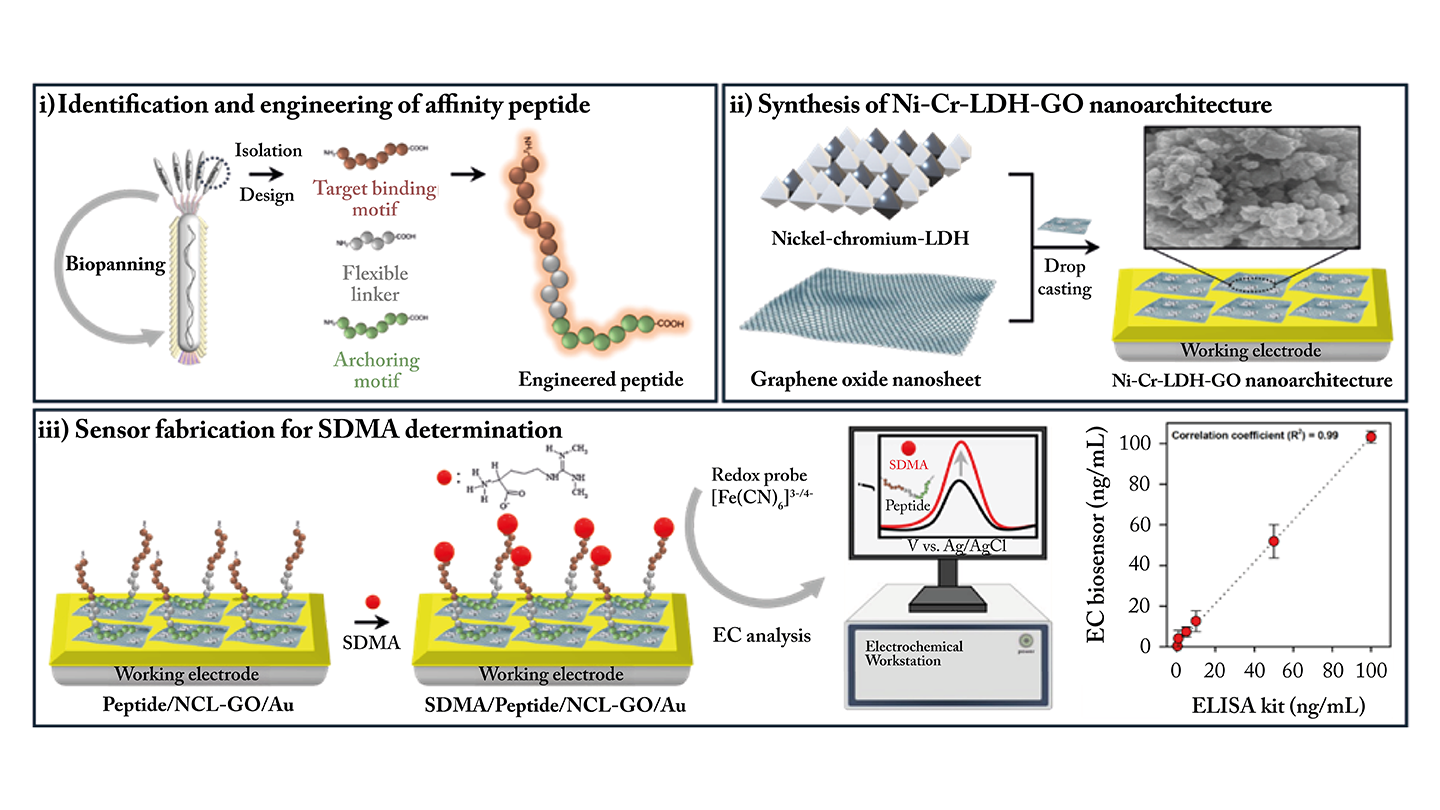
Over 850 million people worldwide are affected by kidney disease – more than double those living with diabetes. Though various diagnostic methods are used in clinical settings, they can be invasive, expensive, and uncomfortable.
Researchers at Chung-Ang University, South Korea, tackled the issue head on, developing an innovative diagnostic method based on a peptide receptor that specifically binds to symmetric dimethylarginine (SDMA) – a key biomarker of kidney disease (1). By attaching this receptor to a functionalized electrode, the team achieved precise detection of trace SDMA levels using electrochemical techniques.
We connected with Jong Pil Park, lead researcher on this study, to find out more.
How do you envision clinical laboratories benefiting from this technology?
The well-established ELISA technique, which uses antibodies, is costly, time-consuming, and prone to denaturation under certain conditions. In contrast, the peptide receptor identified in this study offers advantages like low molecular weight and easy chemical modification. With further testing on real samples like urine or blood, this sensing system shows potential for clinical diagnostic applications.
What breakthroughs enabled sufficient sensitivity for trace-level detection?
Gold electrodes are commonly used in these sensor applications due to their high electrical conductivity, but they're unable to detect specific molecules in their regular state. To improve sensitivity, we enhanced conductivity and other properties by using a novel nanocomposite made of nickel, chromium, and layered double hydroxides. Developing this nanocomposite required significant time and effort to ensure quality and consistency through repeated analyses.
Could your sensor technology be expanded to other biomarkers?
This study aimed to develop a new system to replace current kidney disease diagnostics. Though further research is needed to validate its use as an in vitro diagnostic tool, advancing the core technology could enable broader applications in medicine, including cancer diagnostics. However, as the research is still in its early stages, extensive additional studies are necessary to make it practical for clinical use.

References
- JH Shin et al., Biosens Bioelectron, 267 (2025). PMID: 39461099.




